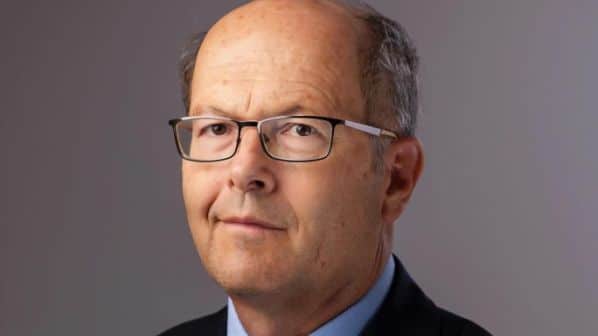A career in the rail industry might appear to be an odd choice for the grandson of Mr André Citroën, the founder of the French automotive group. But over the past 40 years or so, Mr Philippe Citroën’s work has taken him all over the world, often providing him with a front row seat at some of the industry’s most important recent developments.
Citroën is set to leave the European Rail Industry Supply Association (Unife) this month after serving for nearly 13 years as its director general. Before that he enjoyed nine years as CEO of Systra, while his career also included stints at French National Railways (SNCF) as strategy director between 1999 and 2002, where he shared an office with the future French prime minister, Ms Elisabeth Borne, and Paris transport operator RATP as chief of staff from 1993 to 1999, where he worked closely with RATP president Mr Jean-Paul Bailly, who pushed for the adoption of driverless trains in the French capital. Citroën also served as special advisor to the French transport minister from 1990 to 1993, and first sampled life in Brussels as transport counsel at the French permanent representation to the European Union between 1986 and 1990.
Citroën says among “the real results” he was involved in delivering at Systra included groundbreaking metro projects in Dubai and Algiers, Moroccan high-speed, and the return of light rail to French cities. “I remember that I was able to convince the mayors of two or three cities that this was the way to go,” Citroën says.
He also looks back fondly at a plan Systra prepared for a future high-speed network in the United States and has a picture of President Barack Obama holding the map. California’s high-speed project is the legacy of this plan.
While the US might not have embraced high-speed rail, China most certainly has. “To be able to build 40,000km of high-speed rail in 20 years, is really impressive,” Citroën says. He tips India as the global industry’s next big market, driven by significant demand for improving mainline services and growing urban transport networks.
Although China has largely become a challenging market for international suppliers, India, as well other developing regions, are more open, but with some limitations. “What’s been happening in the past few years is the shift in these countries to local content,” he says. “If you want to do business in these countries, you have to build a factory.”
“Rail is at the heart of the decarbonisation of the transport system.”
Philippe Citroën
During Citroën’s time at Unife the landscape shifted significantly for the rail sector in Brussels, where he says he “discovered another world” through regular interaction with MEPs and the European Commission (EC).
“There has been a real change of mindset, people really think that rail is at the heart of the decarbonisation of the transport system,” he says.
Another trend Citroën says has become marked in the past five years is digitalisation. He points to the steady development of driverless metros and reflects on the saga over ERTMS deployment in Europe. He says the Connecting Europe Express, where a train visited 26 countries in 36 days as the flagship event of the European Year of Rail in 2021, emphasised the challenges of cross-border operation in Europe, in particular the value of ERTMS as an interoperable system.
“I really think there is momentum now in favour of ERTMS,” he says. “We have countries such as Austria, Switzerland, Denmark, Belgium and Norway that are making big investments. There is also a change in mindset in the bigger countries. Germany and France are slowly making progress.”
Citroën points to the successful deployment of the Future Railway Mobile Communications System (FRMCS), the long-term successor to GSM-R, as a significant digitalisation challenge of the future. Development of this platform is overseen by the International Union of Railways (UIC) and the Europe’s Rail Joint Undertaking (ERJU), the successor to the Shift2Rail joint research initiative, which ran from 2016 to 2024.
Shift2Rail
Citroën and Unife played a key role in making Shift2Rail happen. “It was the first time that the rail supply industry sat at the same table with the operators, the infrastructure managers, the universities and the SMEs,” Citroën says. “That was big progress and [former Shift2rail executive director] Mr Carlo Borghini was really excellent at getting those people to work together, which was quite challenging at times.”
Other significant milestones during his spell in Brussels include the passage and implementation of the Fourth Railway Package, the technical pillar of which has promoted the European Union Agency for Railways (ERA) to become the sole body responsible for rolling stock authorisation in Europe, a development Citroën believes is positive. He is also proud of Unife’s work on improving gender equality and tackling the industry’s future skills challenges.
As for missed opportunities, Citroën highlights the relatively slow deployment of ERTMS and rolling stock modernisation in eastern Europe, which he says has suffered from under-investment. “Perhaps we didn’t convince the MEPs and member states of the value of this,” he admits. He also bemoans the strengths of rival industry lobbies and their comparatively limited commitment to decarbonisation.
Future challenges inevitably surround securing the vast investment that the rail sector will need for its most important projects, including further ERTMS deployment and the rollout of the Digital Automatic Coupler (DAC). Citroën’s successor will certainly have a lot on their plate in the coming years and will arguably find a sector in ruder health than when Citroën took on the role.
As for his future plans, Citroën is contemplating lecturing on rail and returning to his roots. “The last book about my grandfather was published in 1981,” he says. “I have a lot of archive material and photographs and people say that I should write something. That might be a good idea.”

